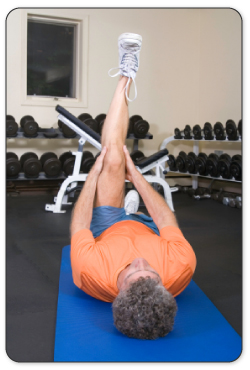|
| Preventing a Pulled HamstringWarm up Your MusclesBefore beginning activity or exercise warm up your leg muscles by doing a Circulatory Boost treatment for 10-15 minute treatment with the Leg TShellz Wrap®. Recovery from your activity can be enhanced by doing a cool down to lower your body temperature and relax your muscles. Circulatory Boost can be performed at home with our TShellz Wrap® device. If you have symptoms or are recovering from a hamstring injury, using Circulatory Boost on a regular basis before your activity or throughout the day will help relax your hamstring muscles, tendons and tissues, and prepare you for action, reduce scar tissue, and help diminish pain and inflammation. Do Appropriate Exercises and ActivitiesIf you are suffering from hamstring pain, listen to your body and decrease, modify and/or avoid any activities or motions that cause pain and irritation (quick stopping/starting, turning, running or jumping, as well as participating on uneven terrain). If you are required to perform these motions at work or play and cannot avoid them, make sure you take frequent breaks and rest to prevent fatigue and pain. Before beginning exercise or training, ask your doctor or physical therapist for a list of appropriate exercises that will not cause further harm to your weak hamstrings while you work to strengthen them.  To stabilize your hamstring and leg area, and increase your range of motion, maintain and build your strength, stability and flexibility of your hamstring, leg, gluteal, pelvis, low back and core body muscles. Light weights, exercise bands and balls are very beneficial for strengthening your lower body. Procioceptive training (core balance training) and plyometrics (exercises to develop strength, speed and agility, such as jumping or bounding movements) are also an excellent addition to your exercise routine. Yoga, tai chi, or a daily stretching routine will help to keep your muscles and joints supple (avoid sudden twisting and turning motions). A regular exercise program that focuses on total body fitness and includes low-impact aerobic activity at least 3 days per week, such as walking, swimming or biking will help to keep you healthy overall and will strengthen your body to prevent against further hamstring injuries. Proper Nutrition Proper food and fluid intake prior to and/or during activities will ensure you have enough energy and will help to prevent against fatigue. Ensure you avoid dehydration which can lead to muscle cramping. Weight loss and/or weight maintenance involves eating a balanced diet full of protein, complex carbohydrates, fats, vitamins, minerals, phytochemicals and antioxidants which will help support a healthy system. If you gain just 10 pounds, your joints must bear from 25 up to 100 pounds extra, which can add unnecessary stress to your body. Limiting your caffeine, alcohol and nicotine consumption will also improve your health. If you suffer from mild inflammation or pain after certain activities or movements use a Leg / Universal TShellz Wrap® before your activities to minimize the chance of worsening the injury. Once activity is complete use a Cold Compress or Ice Pack to treat the inflammation, and rest and elevate your leg.  You can also use analgesic or anti-inflammatory medication for pain relief if required. If you have been given a treatment plan by your health professional, make sure you adhere to it to ensure pain free living. In general, people who are committed to their therapies and exercises will have the best medical outcomes. Pulled Hamstring TreatmentsHamstring injuries are frustrating to live with and healing can take a long time because it's difficult to give your leg the rest it needs. This is especially true for runners and other athletes that return to their sport too early. Re-injury is common but it prolongs recovery and may also lead to permanent damage and other conditions. Treating your hamstring strain correctly is essential to getting rid of your pain and restoring function to your upper thigh. Proper treatment will get you back to regular activities sooner, stop your pain, and reduce the risk of future re-injury. To restore strength and range of motion in your hamstrings, treatment should focus on preventing scar tissue formation and muscle atrophy (shrinkage and weakening of the muscle). This requires rest and the appropriate therapies at the right time. Almost all types of hamstring pulls and tears (except a complete hamstring rupture) can be properly treated with trusted therapies that are available for use at home. Complete ruptures usually require surgery. However, using these home therapies after surgery can help speed recovery, improve function, and increase range of motion in your hamstrings. To learn how to treat a hamstring pull, go to our hamstring treatments page. Product specialists are available 9:00 am to 5:00 pm Eastern Standard Time Monday to Friday. If any question or concern arises, call us or simply send us an email at any time (we check our emails constantly all throughout the day and night.. even on holidays!). We will respond as soon as possible. North America Toll Free 1-866-237-9608 |
    |

